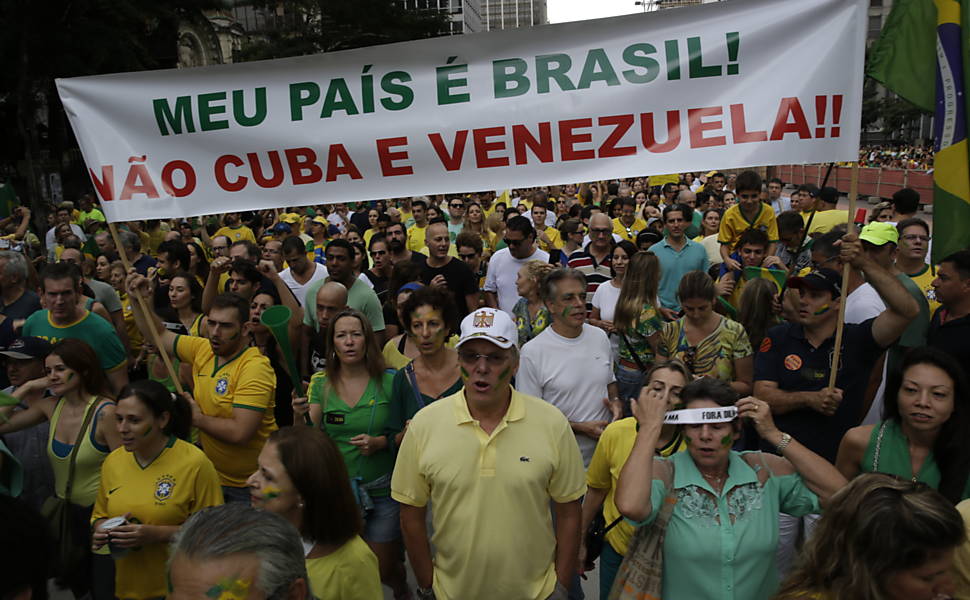Latest Photo Galleries
Brazilian Markets
12h03 Bovespa |
-0,14% | 129.028 |
16h43 Gold |
0,00% | 117 |
12h17 Dollar |
+0,39% | 5,0873 |
16h30 Euro |
+0,49% | 2,65250 |
ADVERTISING
Analysis: Protests Were Made by the Rich, but Could Gain Support of the Poor Soon
03/16/2015 - 10h25
Advertising
FERNANDO CANZIAN
FROM SÃO PAULO
Brazilians dressed in yellow and green and finally had their day of World Cup final in the protests of March 15.
Nearly One Million People Protest Against the Government in Brazil
Those who took to the streets in São Paulo seemed to be more representative of the rich class, of the less than 15% of the families who make over US$ 1,077 a month in Brazil (only 5% earn more than US$ 2,154).
The other 80% make much less than that, below US$ 1,077 per month. Not many of them seem to have attended the protests.
It was clearly a protest of a rich, well tended Brazil, similar to what we see in protests in developed countries or during international arrivals. The poor and toothless, apparently, did not go.
The richer Brazilians who live in big urban centers have reasons to complain. They earned less (proportionally) during the PT administrations.
In the ten years prior to the middle of Rousseff's first administration, the per capita revenue (discounting inflation) among the poorest 10% rose 70%. Among the richest 10% (the recent protesters), the increase was only 12.6%.
The latter also have been under the greatest pressure in recent years due to a continuous inflation of services. Those services range from housekeepers to parking in the middle-class Vila Madalena neighborhood, as well as private schools and health insurance.
Among the poorest, not only income has risen much quicker. Social assintance programs such as "Bolsa Família", "Minha Casa, Minha Vida" and "Luz para Todos" have proliferated. That has guaranteed victories for the PT in the past two elections due to the preponderant results in the poor northeastern region.
The richest classes, concentrated in the South and Southeast, have replied sharply with the reelection of São Paulo Gov. Geraldo Alckmin in the first round of the 2104 election, despite the water shortage crisis. And now, with this kind of protest, sparked by corruption.
But although the poor classes didn't attend en masse this time, they are still the majority in Brazil. And, for the first time in many years, they are starting to fall behind.
The latest IBGE data show that the poorest 10% have had a big decline since 2013. Their income rose only 2.1% in 2013, half of the national average and well below that of the richest 10% (4.4%). The decline in the pace of improvement for the poor is brutal. One year earlier, their income had risen 9.2%.
If the scenario continues, the rich will certainly gain the reinforcement of the poor in the streets in the coming months.
Translated by THOMAS MUELLO




